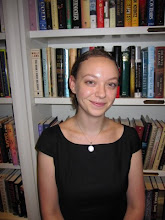Brigid of Kildare: A Novel by Heather Terrell
The history of Saint Brigid is largely apocryphal. A 5th century Gael and one of three of Ireland's patron saints, her biographers agree on little, but the few details of Brigid's life that can be agreed upon are quite interesting. The daughter of Dubthtach, a pagan king of Leinster, and Brocca, a Christian Pict and slave, Brigid's exposure to her parents' differing religions shaped her approach to converting the Gaels upon taking her vows. She founded Kildare Abbey around the year 470 AD. When a bishop in his waning years, Saint Patrick -- whether intentionally or not -- performed the rite of consecration of a bishop. As Abbess of Kildare Abbey, Brigid had administrative authority equal to that of a bishop.
Heather Terrell takes this handful of tenuously agreed upon facts and weaves them into a fascinating tale of a bold, intelligent, fiercely independent woman whose unorthodox methods of worship were looked upon with stringent disapproval by the men in power at the Vatican, who believed that women should be relegated to a role of silent and submissive passivity in the Christian faith. Her Brigid, while perhaps not historically accurate, is -- as the wonderful character Sister Mary puts it -- "one very impressive woman."
In the 6th century, Brigid, daughter of Dubtach, the king of the Fothairt people of southern Gael, and Broicsech, his formidable and outspoken Christian wife and queen, forges her destiny as God's instrument in Gael. While open to hearing her mother teach her of Christianity, she grows increasingly frustrated and disturbed by the lack of strong and educated women in the Gospels. Why, she asks, should she adopt her mother's chosen faith when it affords women none of the respect and positions of authority that druidism does? To prevent Brigid from turning away from a life of Christianity, Broicsech gives her daughter access to the recently banned Gospel of Mary, and Brigid finds in its pages her missing heroine. Mary is a strong-willed, brilliant, educated woman with a close bond to her son the Messiah. Brigid decides to devote herself to a life of religion, and vows that the Church will someday recognize Mary's role in the Christian faith once more.
Over fifteen hundred years later, Alexandra Patterson finds herself called to Kildare to provide her services as a medieval relics appraiser. Sister Mary Kelly, the efficient and practical nun who "keeps" the history of the relics, wants to sell their oldest and most valuable relics to fund the order's efforts to educate the populace about the woman behind the myth, and she believes that Alex is the person for the job. It isn't long before Alex discovers that the chalice, paten, and reliquary she has been commissioned to appraise aren't the only treasures at the Madonna Chapel -- secreted away inside the reliquary is an illuminated manuscript the likes of which she's never seen before. Could it possibly be the rumored lost Book of Kildare that Saint Brigid commissioned in the 6th century?
Writing historical fiction takes a deft touch and a keen sense of how much fact and fiction to blend together. Heather Terrell's Brigid of Kildare is a perfect blend of history and fantasy, and her cast of fictional characters -- in particular Broicsech and Sister Mary Kelly -- are all a delight to read. The amount of research that went into writing this book was certainly not insignificant. Readers will learn plenty about the early days of the Catholic Church, and about the enigmatic religious leader who would one day become Ireland's Saint Brigid.
Expel them all …
5 hours ago



